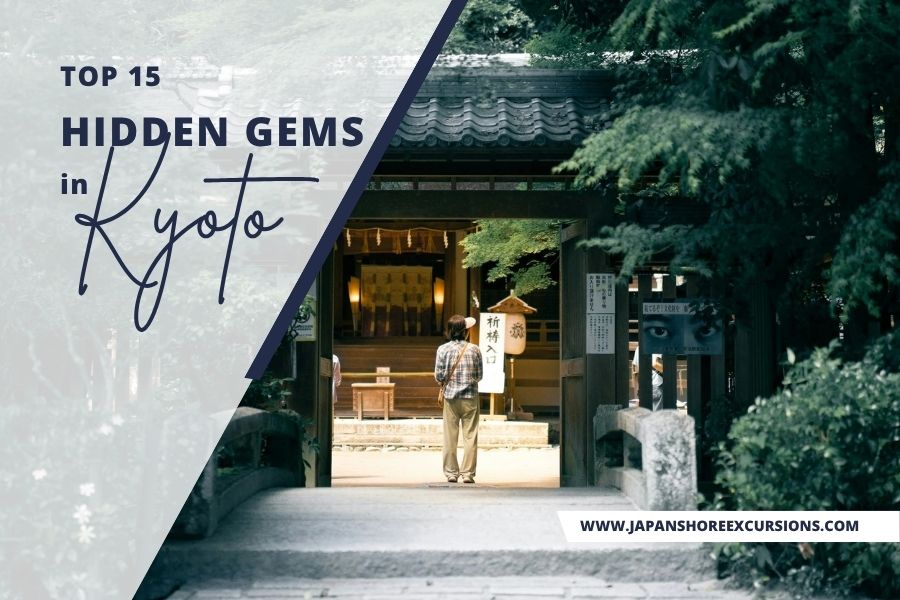When most travelers think of Kyoto, the golden Kinkaku-ji, the red gates of Fushimi Inari, and the Arashiyama bamboo forest immediately come to mind. But beyond the tourist hotspots lies a quieter, more authentic side of Kyoto - temples tucked deep in mossy forests, tea villages rolling with green hills, and riverside neighborhoods where locals sip sake at sunset. This guide reveals 15 hidden gems in Kyoto that go beyond the usual itineraries. Here, you’ll also find practical travel tips, itineraries, and cultural etiquette to make your Kyoto shore excursions smoother and more respectful.
Temples & Gardens Off the Beaten Track
Kyoto has over 1,600 temples and shrines, yet most travelers only see a handful of them - the Golden Pavilion, Silver Pavilion, and Kiyomizu-dera. But some of the city’s most magical experiences lie in the quiet corners: mossy gardens hidden at the end of forest paths, temples adorned with quirky statues, and sanctuaries where you may be the only visitor. Exploring these lesser-known temples not only gives you peace and space to breathe, but also a deeper connection to Kyoto’s spiritual heart.
Here are a few temples and gardens listed in hidden gems in Kyoto where time slows down, the crowds disappear, and the beauty of Kyoto truly shines.
1. Otagi Nenbutsu-ji
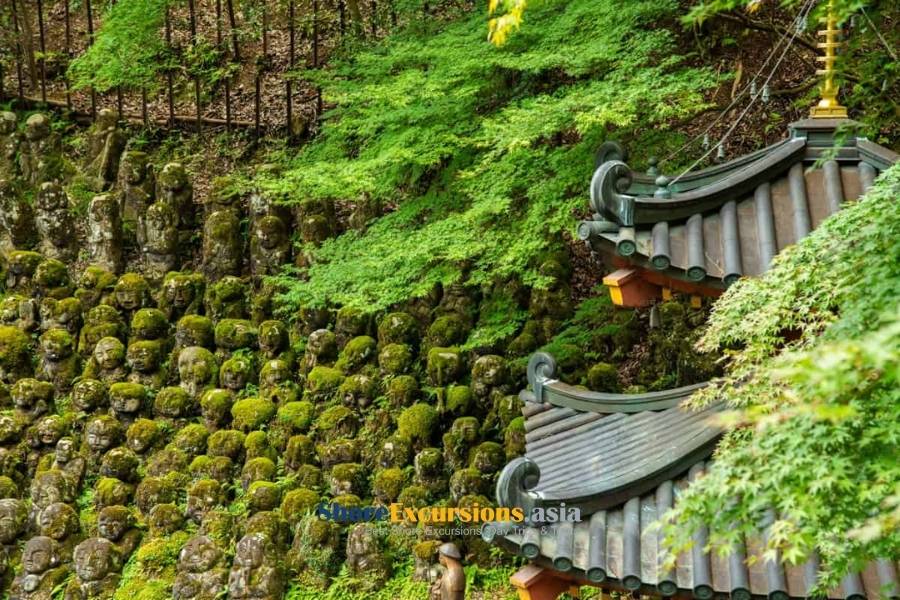
Tucked in the hills of Arashiyama, this small temple is famous for its 1,200 whimsical stone statues of Rakan (Buddha’s disciples). Each statue has its own unique expression. Some are smiling, others are playful, and a few even look like they’re sharing a drink. It feels like wandering through a secret outdoor gallery, frozen in stone yet full of character.
Because it requires a short detour from the main bamboo path, Otagi Nenbutsu-ji is blissfully quiet compared to Arashiyama’s crowds. If you’re looking for a temple that’s both spiritual and playful, this hidden treasure offers the perfect blend of serenity and charm.
- Getting there: Short taxi or bus ride from central Arashiyama.
- Hours/fee: Small admission fee; open daily.
- Best time to visit: Autumn, when fallen leaves scatter across the statues.
2. Gio-ji Moss Temple
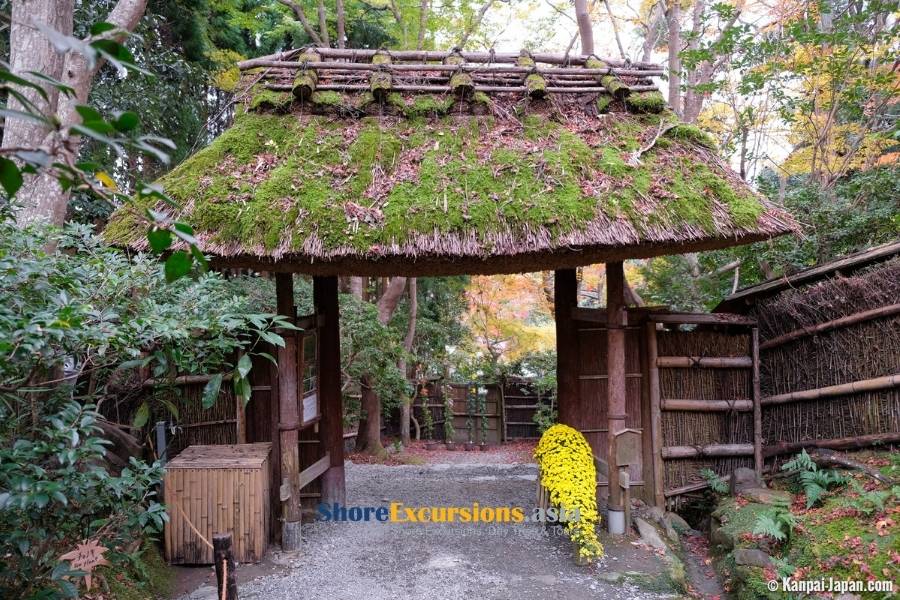
North of Arashiyama lies one of Kyoto’s most enchanting gems, a temple wrapped in a velvety carpet of moss. Gio-ji is small, but its lush green garden glows in the mist and rain, creating a fairytale-like scene. The main hall overlooks the moss garden like a painting, and you can sit in silence listening to the sound of rustling leaves and birdsong.
Because of its intimate size, Gio-ji never feels overwhelming. Instead, it gives travelers the rare gift of stillness, the chance to slow down and experience Kyoto at its most contemplative. If you’re a photographer, the textures of moss and light filtering through the trees make it a dream location.
- Getting there: 15-minute walk from Saga-Arashiyama Station, tucked in a quiet forest.
- Hours/fee: Open daily with a small entry fee.
- Tip: Combine with nearby Adashino Nenbutsu-ji for a peaceful half-day walk.
3. Horin-ji (Daruma-dera)
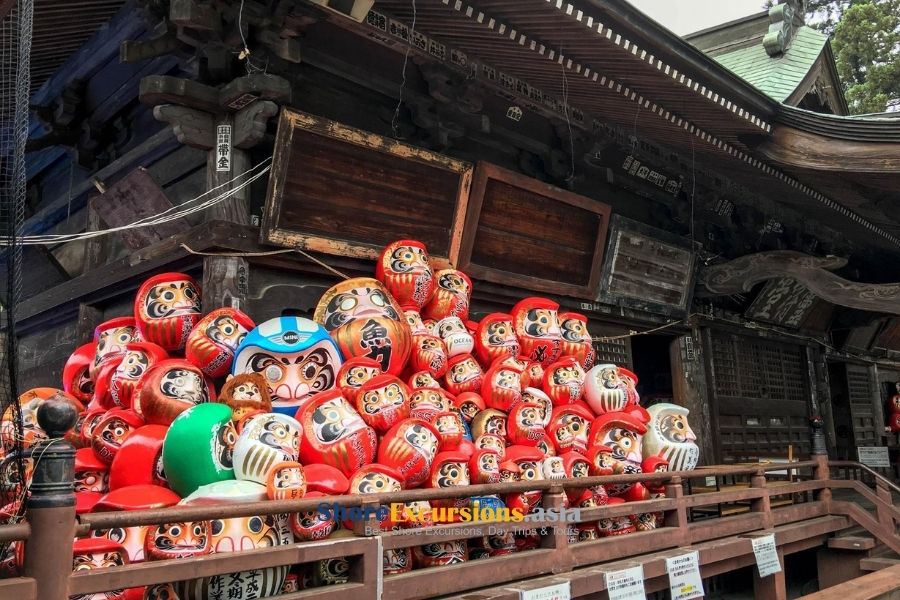
Nicknamed the “Temple of Daruma Dolls,” Horin-ji is a quirky and colorful stop that surprises many first-time visitors. Hundreds of lucky Daruma dolls fill the temple grounds, creating an atmosphere that feels both spiritual and playful. Each doll represents determination and perseverance, making it a place that inspires reflection as well as smiles.
Unlike Kyoto’s more famous temples, Horin-ji is rarely crowded, giving you time to notice small details like the unique expressions painted on each doll. It’s a wonderful spot for photography and a refreshing reminder that spirituality in Japan can also be lighthearted.
- Getting there: Accessible by bus or a short walk from Arashiyama’s less-traveled side streets.
- Hours/fee: Typically open daily; modest entry fee.
- Best for: Travelers who enjoy discovering unusual and photogenic spots.
4. Hōnen-in - Hidden Gem in Kyoto
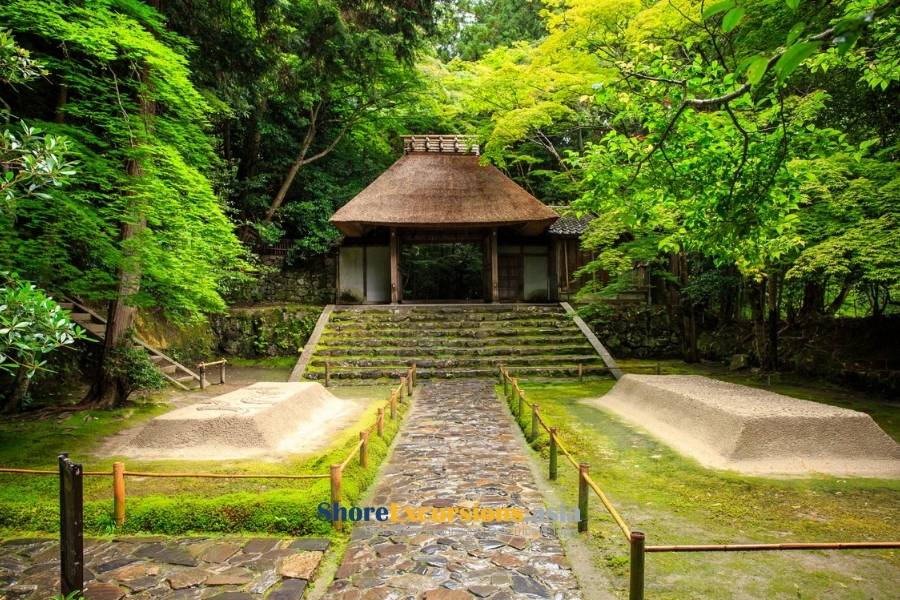
Just off the Philosopher’s Path, Hōnen-in feels worlds away from the bustle of Kyoto’s most popular walking route. The moss-covered gate, trickling streams, and stone bridges make it one of the city’s most atmospheric temples. Its quiet beauty invites you to pause, breathe, and enjoy a rare moment of solitude in central Kyoto.
The temple is also known for its seasonal art displays and gardens that change with the light. In autumn, fallen leaves scatter across the moss, creating natural patterns, while in spring, delicate blossoms brighten the grounds. It’s a free-entry temple, which makes it a hidden bargain in a city where temple visits often add up.
- Getting there: 10-minute walk from the Philosopher’s Path (near Ginkaku-ji).
- Hours/fee: Free entry; donations appreciated.
- Best season: Autumn foliage and cherry blossom season, when contrasts are most striking.
Hidden Gems in Kyoto for Countryside & Tea Country
If you want to experience the slower, more traditional side of Japan, head to Kyoto’s countryside. Beyond the temples and bustling markets, the rolling tea fields, rustic villages, and quiet farmlands are among the most authentic hidden gems in Kyoto. These places allow you to see a lifestyle that has remained unchanged for centuries.
Exploring these hidden places in Kyoto gives you an entirely different perspective on the city: one that is intimate, scenic, and refreshingly peaceful. These are some of the most beautiful Kyoto hidden spots that combine culture, history, and natural landscapes.
5. Uji - Kyoto’s Tea Capital
Uji is world-famous for its green tea, considered the finest in Japan. Walking along the river, you’ll find tea houses serving frothy matcha lattes, delicate wagashi sweets, and even matcha noodles. The highlight is Byōdō-in Temple, a UNESCO World Heritage site in Japan depicted on the ¥10 coin, where its Phoenix Hall glows beautifully above the reflecting pond. This combination of spiritual heritage and tea culture makes Uji one of the most rewarding hidden spots in Kyoto for travelers.
Beyond the temples and tea shops, Uji offers riverside walks, cultural museums, and tea-picking experiences with local farmers. Joining a tea ceremony here feels especially meaningful, as you’re tasting matcha where it’s grown. If you’re short on time, Uji is the easiest countryside escape from central Kyoto, making it one of the most accessible hidden gems of Kyoto.
- Getting there: 20 minutes by train from Kyoto Station.
- Best for: Tea lovers, cultural travelers, day-trippers.
- Tip: Visit in late spring or early summer to see vibrant green tea fields.
6. Wazuka - Rolling Tea Fields
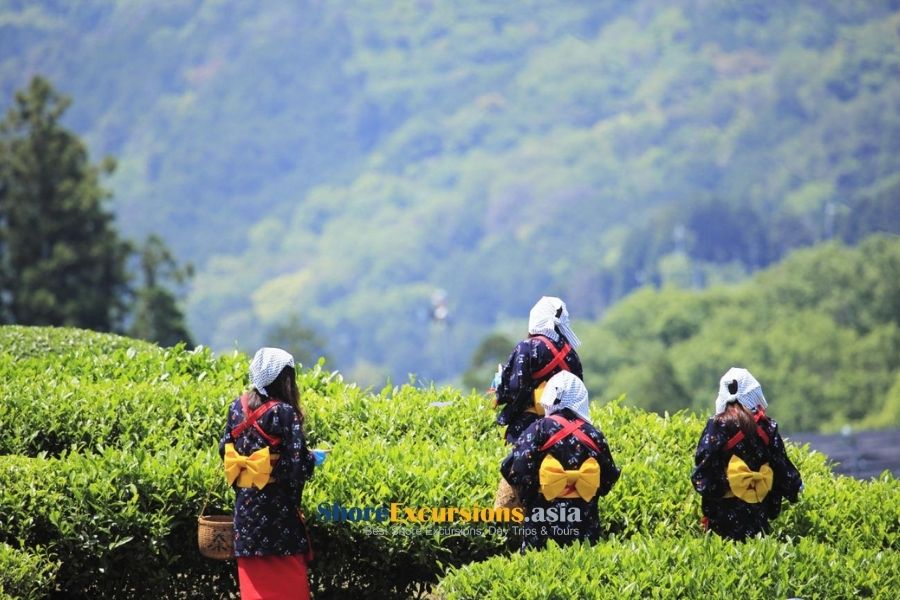
For those who want to go deeper into rural life, Wazuka is one of the most breathtaking hidden gems in Kyoto. Here, terraced tea fields stretch across the hills, creating a sea of emerald green. Unlike Uji, which is popular with day-trippers, Wazuka is still largely untouched by mass tourism. The town offers cycling tours through tea plantations, tea-picking workshops, and farm-stay experiences where you can live like a local for a night.
Wazuka’s charm lies in its authenticity, this is not a polished tourist attraction, but a living countryside where generations have grown tea for over 800 years. Whether you’re sipping freshly brewed sencha on a farmer’s porch or learning how tea leaves are processed, Wazuka delivers the kind of immersive travel memory that stays with you. It’s easily one of the most photogenic Kyoto hidden spots and a must-visit for anyone wanting to step off the beaten path.
- Getting there: 1 to 1.5 hours from Kyoto by train + bus.
- Best season: May to July for the tea harvest.
- Best for: Rural explorers, cyclists, and tea enthusiasts.
7. Ohara - Kyoto Hidden Spot
Nestled in the northern mountains, Ohara feels like stepping back in time. This tranquil farming village is home to Sanzen-in Temple, known for its moss garden and smiling “warabe-jizo” statues hidden among the greenery. Walking through Ohara’s narrow streets, you’ll find traditional houses, small vegetable plots, and family-run restaurants serving seasonal dishes like Ohara pickles. It’s a side of Kyoto that many visitors never see, making it one of the most underrated hidden gems in Kyoto.
Ohara is also a great spot to experience rural hospitality. You can stay in a minshuku (family inn), soak in a countryside onsen, or enjoy temple vegetarian cuisine. During autumn, the valley glows with fiery foliage, while in spring, cherry blossoms add a soft charm to the village. For travelers searching for peaceful hidden gems of Kyoto, Ohara delivers the perfect blend of nature, tradition, and warmth.
- Getting there: About 1 hour by bus from central Kyoto.
- Best season: Autumn for foliage, spring for blossoms.
- Best for: Nature lovers, photographers, and cultural travelers.
Kyoto Hidden Gems for Nature Hikes and Day Trips
Kyoto is surrounded by lush mountains, cedar forests, and rural valleys that make it a paradise for hikers. These trails lead you through tranquil shrines, bubbling rivers, and traditional villages that feel far away from the modern world.
Venturing into the countryside of Kyoto gives visitors a taste of the city’s spiritual connection to nature. These are the Kyoto hidden spots that combine cultural depth with natural wonder. They’re not just hikes, they’re journeys into the heart of what makes Kyoto timeless.
8. Kurama to Kibune Trail
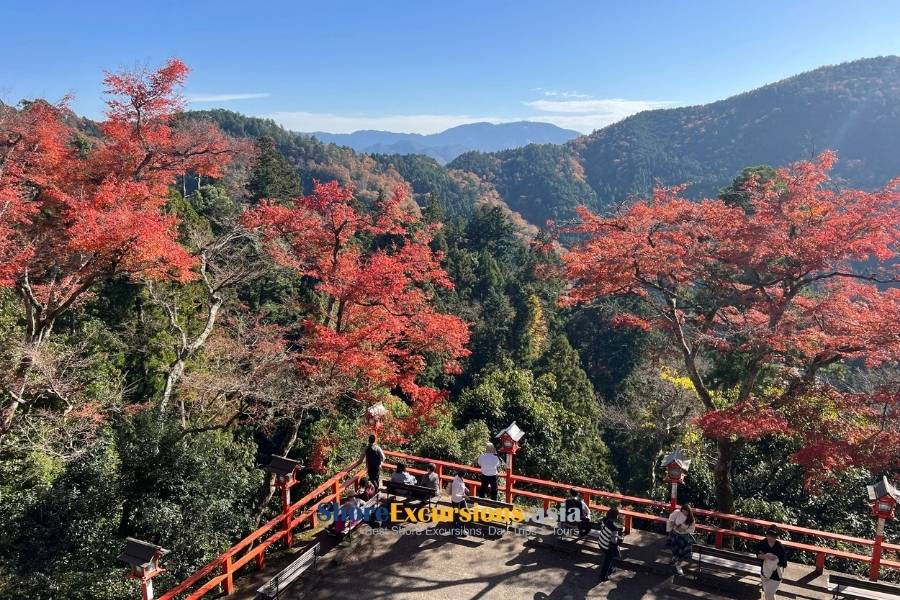
The Kurama to Kibune hike is one of the most magical walking routes in Kyoto. Starting at Kurama-dera Temple, perched high in the mountains, you’ll pass through ancient cedar forests and stone lantern-lined paths before descending into the riverside village of Kibune. Along the way, mystical statues and hidden shrines appear from the mist, making it one of the most atmospheric hidden gems in Kyoto.
What makes this hike special is the reward at the end: Kibune’s riverside restaurants, where wooden platforms are built over the flowing stream. In summer, you can enjoy a traditional kaiseki meal with your feet dangling above the cool water. For many travelers, this hike represents the perfect blend of nature, culture, and dining, earning it a spot among the top hidden gems of Kyoto.
- Getting there: Take the Eizan Railway to Kurama Station.
- Length: 2 - 3 hours, moderate difficulty.
- Best season: Autumn for fiery foliage, summer for riverside dining.
9. Takao - A Hidden Gem in Kyoto
Nestled in the mountains northwest of Kyoto, Takao is a tranquil valley where temples and nature come together in harmony. The area is home to Jingo-ji Temple, famous for its unique ritual of throwing clay disks (kawarake) into the valley below to cast away bad luck. With towering trees and wooden bridges crossing crystal-clear streams, Takao feels like a spiritual retreat hidden within the forest.
In autumn, Takao transforms into one of the most spectacular hidden spots in Kyoto. The entire valley bursts into red, gold, and orange hues, creating one of the most breathtaking seasonal views in Japan. Unlike more crowded leaf-viewing spots, Takao still feels spacious and serene, making it one of the best-kept Kyoto hidden gems for travelers who want to enjoy the magic of fall without the crowds.
- Getting there: 50 minutes by bus from central Kyoto.
- Best season: October - November for peak foliage.
- Best for: Autumn travelers, photographers, and temple explorers.
10. Visit Keihoku for Hidden Gems
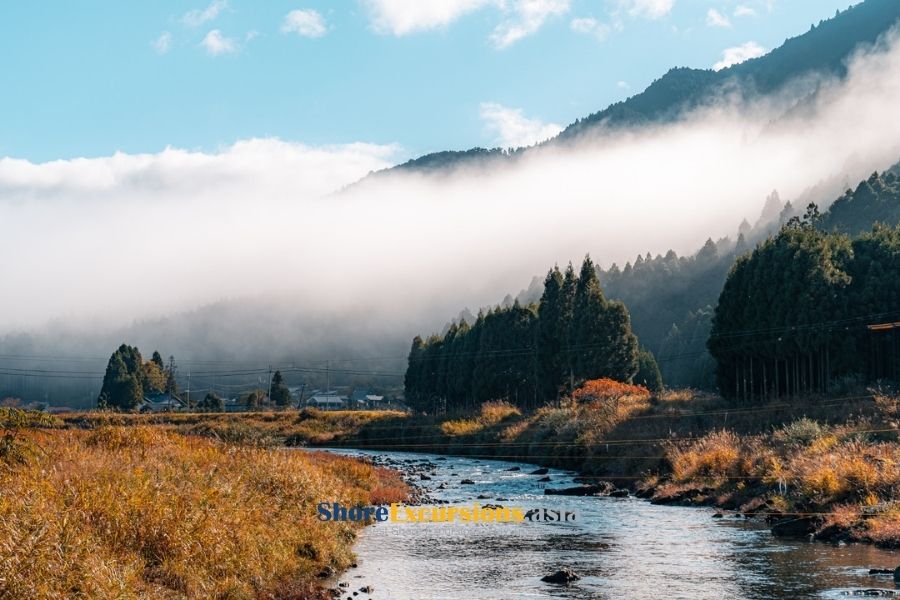
For an even more rustic escape, head to Keihoku, a mountainous region north of Kyoto known for its cedar forests, waterfalls, and thatched-roof farmhouses. This quiet countryside is a living museum of Japan’s rural traditions, where you can walk through untouched forests, visit historic shrines, and enjoy farm-to-table meals prepared by locals. Keihoku is a peaceful retreat where few tourists venture, making it one of the most authentic hidden gems in Kyoto.
What sets Keihoku apart is its sense of timelessness. You’ll find homes with traditional kayabuki (thatched) roofs, quiet riverside paths, and tea plantations tended by hand. It’s the kind of place where you can spend a day hiking, picnicking by a waterfall, or simply soaking in the atmosphere of old Japan. For travelers seeking untouched hidden gems of Kyoto, Keihoku is an experience that feels both refreshing and deeply cultural.
- Getting there: 90 minutes by bus from Kyoto Station.
- Best for: Nature lovers, hikers, and cultural explorers.
- Highlights: Cedar forests, waterfalls, thatched-roof houses.
Kyoto Hidden Places for Food & Local Life
The city hides a world of culinary treasures in its back alleys, side streets, and riverside quarters. Beyond the crowded Nishiki Market, you’ll discover cozy sake breweries, family-run izakaya, and nostalgic lantern-lit lanes that feel like stepping into another era. These are the hidden gems in Kyoto that give travelers a chance to taste the city’s authentic flavors while soaking in its timeless atmosphere.
11. Fushimi Sake District
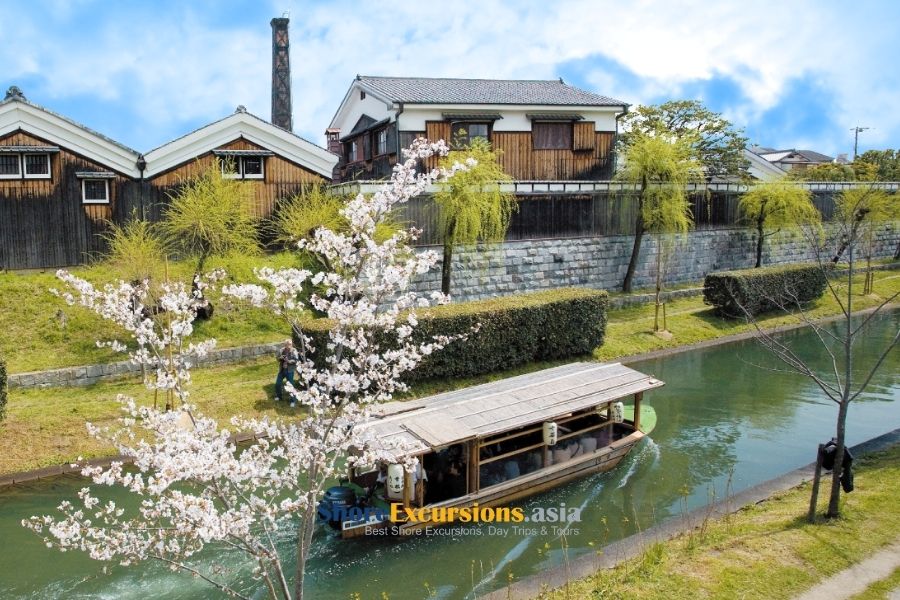
Fushimi is one of Japan’s most famous sake-brewing districts, yet many travelers overlook it. With its historic canals, white-walled breweries, and centuries-old brewing traditions, this neighborhood is one of the most authentic hidden gems of Kyoto. Walking through Fushimi, you’ll smell the subtle aroma of fermenting rice drifting from the breweries, and many shops offer tastings so you can compare different styles of sake.
- Getting there: 15 minutes by train from central Kyoto.
- Best for: Sake tastings, cultural travelers, history lovers.
- Tip: Try seasonal sake, which changes with the time of year.
12. Nishiki Market Side Streets
Nishiki Market itself is bustling and famous, but its side streets are where you’ll find some of the most rewarding hidden spots in Kyoto. Step away from the main arcade and you’ll discover tiny eateries serving local snacks like grilled mochi, yuba (tofu skin), and pickled vegetables unique to Kyoto. Antique shops, family-owned izakaya, and specialty stores make these backstreets a playground for curious travelers.
What makes these alleys special is the atmosphere. The side streets give you the chance to explore at your own pace, interact with locals, and uncover the everyday food culture of the city. For travelers seeking authentic experiences, these alleys are one of the best Kyoto hidden gems to explore both by day and by night.
- Getting there: Central Kyoto, near Shijo Station.
- Best tip: Visit in the morning for food shopping, evenings for drinks.
- Best for: Foodies, street photography, cultural explorers.
13. Arashiyama Backstreets

Most visitors to Arashiyama flock to the famous bamboo grove, but just a few steps away, a quieter world awaits. The backstreets of Arashiyama are lined with traditional tea houses, artisan workshops, and small restaurants where you can try Kyoto-style sweets or handmade soba noodles. These peaceful lanes are a reminder that some of the most magical hidden gems in Kyoto are not the crowded landmarks, but the everyday places where locals live and work.
Exploring these streets allows you to see another side of Arashiyama - lower, calmer, and more intimate. You might stumble upon an artisan carving wooden crafts, or a tea master preparing matcha in a quiet café. For travelers who want to escape the crowds and enjoy authentic encounters, the Arashiyama backstreets are among the most delightful hidden places in Kyoto.
- Getting there: 5 - 10 minutes’ walk from Arashiyama Station.
- Best for: Peaceful walks, artisan shopping, traditional food.
- Tip: Visit early morning or late afternoon for the quietest experience.
14. Explore Pontocho at Night
Pontocho is one of Kyoto’s most atmospheric districts, a narrow alley running along the Kamo River. By day it may seem quiet, but at night it comes alive with glowing lanterns, the chatter of diners, and the aroma of sizzling yakitori. With its mix of izakaya, riverside restaurants, and tiny bars, Pontocho is one of the most romantic Kyoto hidden spots to experience after sunset.
What makes Pontocho a must-visit is the blend of old and new. Some restaurants here have been serving seasonal kaiseki meals for generations, while others are trendy spots with a modern twist on Japanese cuisine. Walking down this lantern-lit alley feels like time travel, making it one of the most unforgettable hidden gems of Kyoto nightlife.
- Getting there: Central Kyoto, near Sanjo or Shijo Stations.
- Best for: Nightlife, dining, photography.
- Tip: Stick to public areas, as some alleys are residential with restrictions on photography.
Artisan Workshops - Kyoto Hidden Gems
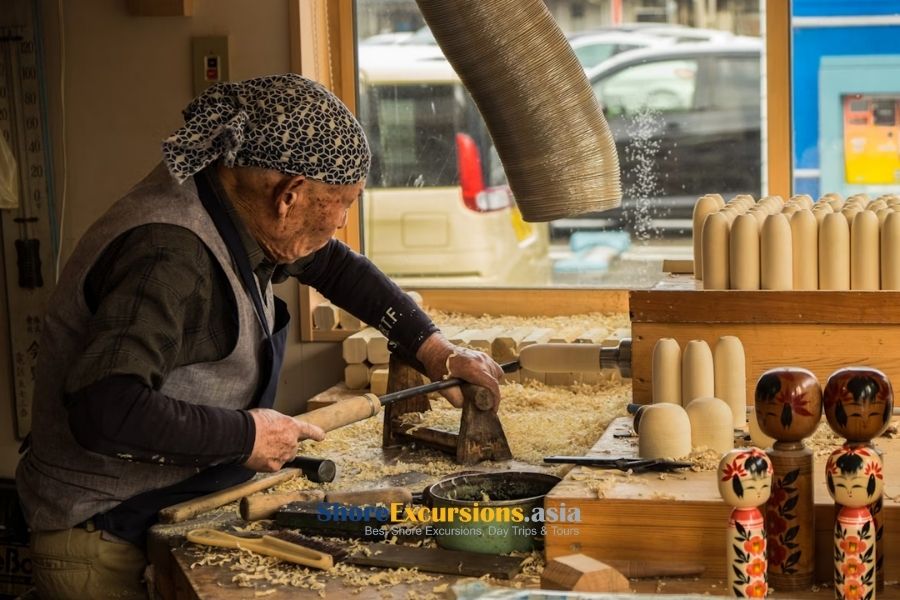
Kyoto is home to some of Japan’s most skilled artisans, and many open their doors to visitors for hands-on workshops. You can try your hand at pottery in a studio where the techniques date back hundreds of years, or paint your own folding fan with patterns inspired by nature.
Paper lovers will enjoy making washi (traditional handmade paper), while others may prefer learning indigo dyeing or gold leaf application. These experiences bring you closer to the spirit of craftsmanship, making them unforgettable hidden gems of Kyoto.
What makes these workshops special is the intimacy and guidance of the masters themselves. You’ll sit with them in small studios, listen to their stories, and gain insights into why these crafts have been preserved for centuries. These cultural sessions are the kind of hidden spots in Kyoto that stay in your heart long after your trip.
- Where: Small studios and family-run workshops across Kyoto.
- Best for: Cultural explorers, creative travelers, families.
- Tip: Book in advance, as workshops are small and fill up quickly.
- Suggested experiences: Pottery, fan painting, calligraphy, washi paper, indigo dyeing, tea ceremony.
In conclusion, Kyoto is more than its iconic temples, it’s a city of subtle details, secret gardens, and neighborhoods where tradition quietly lives on. By exploring these hidden gems in Kyoto, you’ll experience a side of the city most tourists overlook. From tea villages to moss temples, from forest hikes to sake alleys, these Kyoto hidden spots reveal the soul of Japan’s cultural capital.
Which of these hidden gems of Kyoto would you like to explore first? Share your favorites with Japan Shore Excursions in the comments below!

